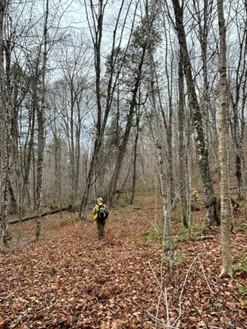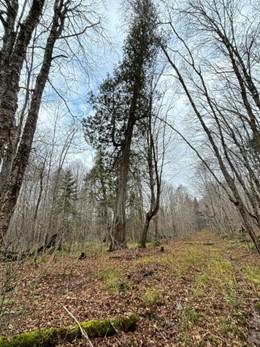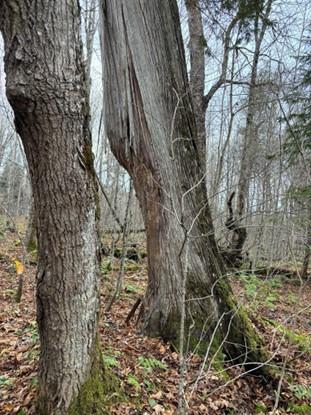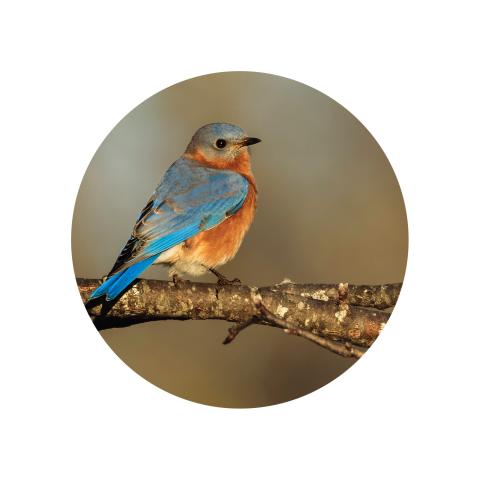Northern White Cedar
Hello everyone and welcome to 2024!
Now that the holiday season has come and gone, and snow has started to fall here in the North Country, our thoughts move from Christmas trees and family gatherings to skis, snowshoes, snowmobiles, and other winter activities. In this part of the country, it also causes us to think about some of our wildlife and how they manage in the cold and snow. This is especially true for our White-tailed Deer.
You might be asking at this point, ‘What does this have to do with the subject of this article?’ Well, to begin with, the Northern White Cedar is a very important tree for our wintering deer herds. Stands of evergreens in low-lying areas, typically along streams and wetland areas, provide critical wintering habitat for our deer population. The dense crowns of well-stocked, mature cedar stands hold the snow, preventing it from piling up on the ground beneath, thus making it easier for the deer to move around. Young cedars also provide winter browse and can be a very important food source during the winter season. These White Cedar stands also provide habitat for several bird species, including warblers, sparrows, and woodpeckers.

This is the Northern White Cedar, along with one just out of the picture, that have been co-State Champions for New Hampshire. On a planned 10-year cycle, these trees are re-measured for potential growth or mortality.
Although Northern White Cedar is often associated with ‘cedar swamps’, it can also do quite well on moderately well-drained soils with Sugar Maple, White Ash, and Basswood. The specific cedar tree, or trees, that this article is about are not located in a swampy area at all. Although the old road that is alongside this particular tree is a bit wet, the surrounding area is occupied primarily by northern hardwood trees rather than cedar and other evergreens.

This is the tree that has been the co-State Champion for the past 10 years and is located within just a short distance from the other one.
This is the tree that has been the co-State Champion for the past 10 years and is located within just a short distance from the other one.
After the re-measure of both trees, the first one was named State Champion alone, while the other one dropped out of contention. They both grew a little in height over the past 10 years, but the real difference is in the circumference of the trunk. The first tree stayed about the same as the earlier measurement, while the second one actually decreased in size. You might ask ‘How does this happen?’
Both of these Northern White Cedar trees, as well as a couple of other in the vicinity, have been visited multiple times by the resident Black Bear. These bears have scratched the trunks of these trees to mark their territory. This practice is common and occurs on many different tree species, not just the cedars. Over time, especially with the softer wood of the evergreens, bark and woody material may be scratched off of the trunk, thus reducing the overall circumference of the tree.

As can be observed here, from the years of ‘scratching’ and rubbing on this tree, a significant amount of woody material has been removed.
In addition to marking their territory by scratching the tree trunks, the bear will rub on the exposed wood. You see, the Northern White Cedar has a natural insect repellent that the local furry residents take advantage of. As our Grafton County Forester, Jim Frohn, mentions (Looking for Northern White Cedar, Walk in the Woods series, UNH Cooperative Extension December 14, 2017), ‘Cedar is also known for its pleasant scent, and is often used in chests for storing blankets, bedding, or clothing. Cedar oil, distilled from the foliage, is used in cleansers, disinfectants, hair preparations, insect repellants, and soaps.’
If you happen to have Northern White Cedar in your forest, and would like more information on managing for it, and other species on your woodlot, contact your County Forester. We are available to provide information and resources to assist in managing your forested property.


